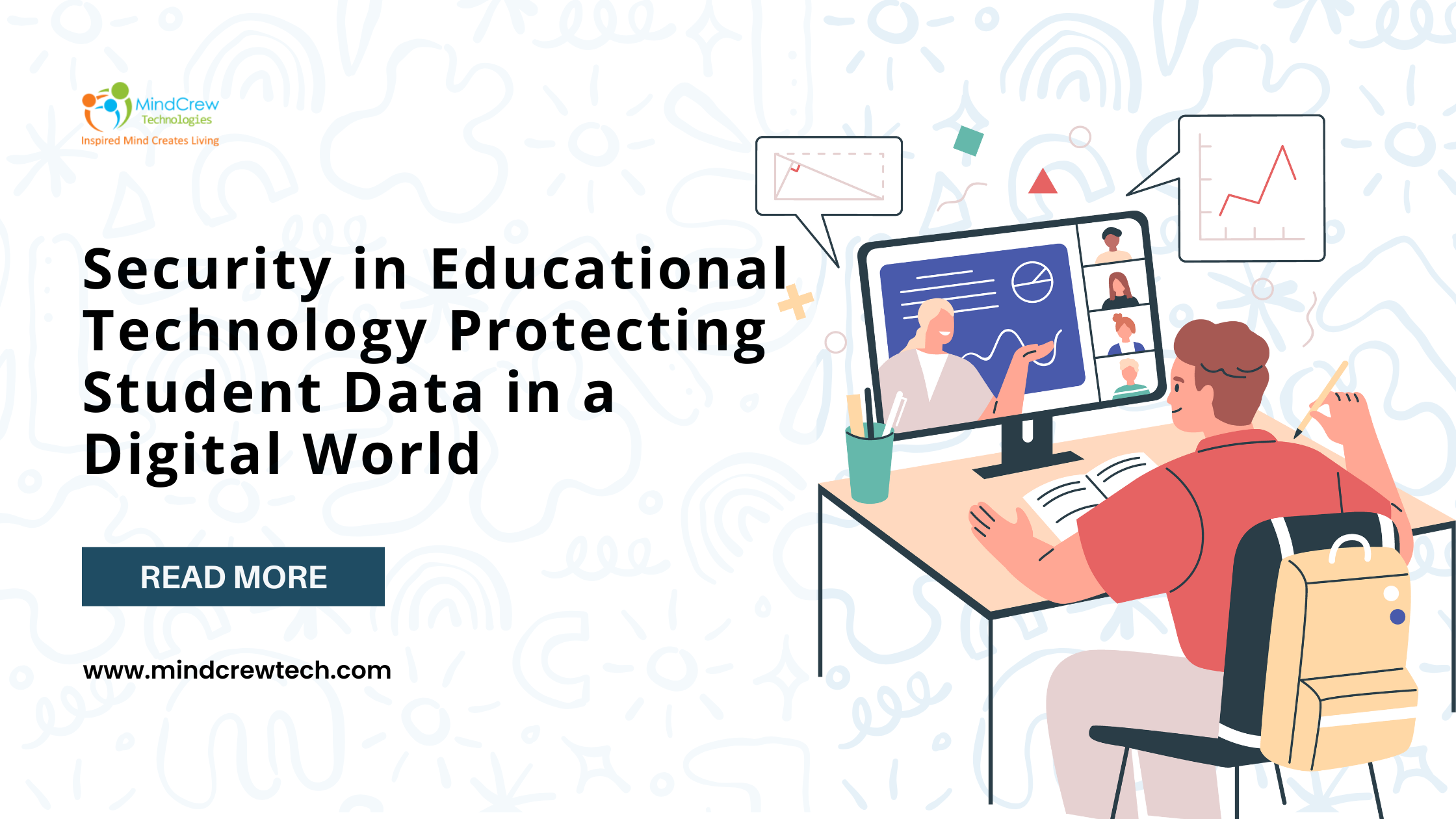Security in Educational Technology: Protecting Student Data in a Digital World
Introduction
With the rapid evolution of educational technology, schools, universities, and online learning platforms are increasingly relying on education mobile applications and AI eLearning software development to enhance learning experiences. However, the transition to digital learning in education brings significant concerns about privacy and security in educational settings. Protecting student data from cyber threats is now a top priority for institutions, educators, and technology providers.
In this blog, we will explore the importance of data security, common risks in educational data management, best practices to ensure online education security, and how institutions can safeguard student information while adopting secure e-learning app development strategies.
Why Security Matters in Educational Technology
The shift to digital education has enabled greater accessibility and engagement, but it has also exposed students and institutions to cyber threats. Schools collect vast amounts of personal data, including names, addresses, academic records, health information, and financial details. Without proper security measures, this data is vulnerable to breaches, hacking, and misuse.
Institutions that fail to prioritize digital security in educational settings risk damaging their reputation, losing student trust, and facing legal consequences due to non-compliance with privacy regulations like GDPR, FERPA, and COPPA. This is why implementing strong security frameworks is crucial in educational data management.
Common Security Risks in Digital Learning
The increasing reliance on educational technology and education app development has given rise to several security challenges. Some of the most common risks include:
1. Cyberattacks on Educational Institutions
Educational institutions are prime targets for cybercriminals due to the vast amount of sensitive data they store. Schools and universities have experienced data breaches, ransomware attacks, and hacking attempts that compromise student and faculty information.
2. Unsecured Educational Apps and Platforms
With the rise of e-learning, many institutions use education mobile applications without thoroughly evaluating their security features. Some applications lack proper encryption, making them easy targets for data theft. Ensuring security compliance in app deployment platforms is essential to safeguarding student information.
3. Weak Authentication and Access Control
Many schools and application deployment systems fail to implement strong authentication methods, allowing unauthorized access to sensitive data. Weak passwords and lack of multi-factor authentication (MFA) increase the risk of breaches.
4. Phishing Attacks and Social Engineering
Cybercriminals often target students and faculty with phishing emails to trick them into revealing login credentials or downloading malware. Without proper cybersecurity awareness, institutions remain vulnerable to such attacks.
5. Lack of Data Encryption and Secure Storage
Failure to encrypt data means that if hackers gain access, they can easily read and exploit student information. Encrypting data at rest and in transit is crucial for online education security.
Best Practices for Data Security in Educational Technology
To ensure a safe digital learning environment, institutions must implement robust security measures in educational data management. Below are some best practices for enhancing privacy and security in educational settings.
1. Implement Strong Authentication and Access Controls
- Require multi-factor authentication (MFA) for all users, including students, teachers, and administrators.
- Use role-based access control (RBAC) to limit data access based on user roles.
2. Secure Educational Applications and Platforms
- Choose educational application development solutions that comply with industry security standards.
- Conduct regular security audits to identify vulnerabilities in education app development.
3. Encrypt Student Data
- Use end-to-end encryption for student records, assessments, and communications.
- Ensure cloud storage services used for educational data management support encryption.
4. Provide Cybersecurity Awareness Training
- Educate students and faculty on recognizing phishing attempts and securing personal devices.
- Establish a security policy outlining best practices for online education security.
5. Regularly Update Software and Security Patches
- Ensure all educational software and AI eLearning software development platforms are up to date.
- Implement automated updates to prevent vulnerabilities from being exploited.
Conclusion
As digital learning in education continues to expand, protecting student data should be a top priority for educational institutions, developers, and policymakers. By adopting strong cybersecurity measures in educational technology, ensuring compliance with privacy laws, and choosing secure e-learning app development practices, we can create a safer learning environment for students.
Investing in education mobile applications with built-in security features and training students and faculty in cybersecurity best practices will help safeguard sensitive information and build trust in the digital education ecosystem.







